Goals and Objectives: Differences Analyzed
por Sherri Jenkins

1. Objectives
1.1. Objectives are specific, concrete tasks that can be assessed, observed, and measured to ensure the principal goal is obtainable. They are often referred to as sub-goals. Objectives are generally smaller in size and are a means to an end (Smart Goals Guide, 2016). There are three types of objectives; cognitive objectives are used to build knowledge, affective objectives are used to change attitudes, and psychomotor objectives are used to build a skill set (Hodell, 2016). If your goal is to hit a bull's eye on a target, a cognitive objective would be used to assess the mathematical component of archery, an affective objective would assess attention to archery safety, and a psychomotor objective would assess the archer's ability to string a bow aptly.
1.1.1. Hodell (2016) suggests as a fourth objective domain interpersonal objectives. An interpersonal objective would require being able to measure and assess emotional components associated with the learning process. Romiszowski (as cited in Pershing, 2006) postulated that the interpersonal domain is directly linked with the objectives found in either cognitive, affective, and psychomotor and though difficult to assess its presence cannot be ignored.
2. Goals
2.1. A goal is a broad statement that is abstract, intangible, unmeasurable, generally long-range, and lacks specificity. Goals provide the framework for formulating the specific objectives that lead to attaining a stated desire or aim. Often viewed as the Big Picture, the expectation is the attainment of the desired state based on effort (Investor Words, 2017). A goal often defines the destination and modifies the direction to get toward that target, as well as create the necessity to develop specific tasks in pursuit of achievement.
3. References
4. Conclusion
5. Differences
5.1. Goals and objectives are often used interchangeably, but distinct differences exist (Pierce, 1995). Unlike, objectives, goals are not measurable, but are a longer-range target geared towards an accomplishment or feat. Alternatively, objectives are observable, measurable, unambiguous, and specific steps/actions geared towards performance. Objectives identify specific actions to be performed to reach a stated goal. Once the initial objectives are accomplished, often, more challenging objectives are charted in pursuit of goal attainment. Thus, goals are all-purpose statements of desired results; whereas, objectives are thorough statements of results (Hodell, 2011, p. 90).
6. A-B-C-D Objectives
6.1. 1). Given the Forbes School of Business Coursepack content and the Charter Financial Analysts competencies model, a Southern New Hampshire University's (SNHU) MBA student should be able to accurately calculate and solve all time value of money problems upon graduation. 2). After completing the SNHU New Faculty Comprehensive Training and participating in a mentor-guided workshop, an SNHU novice faculty member should be able to properly setup and facilitate an online course without a mentor within two weeks of training completion; without error. 3). The MA student taking CUR/516 should be able to write measurable objectives using A-B-C-D formatting given the many objective-centered resources provided by the UOPX without error.


